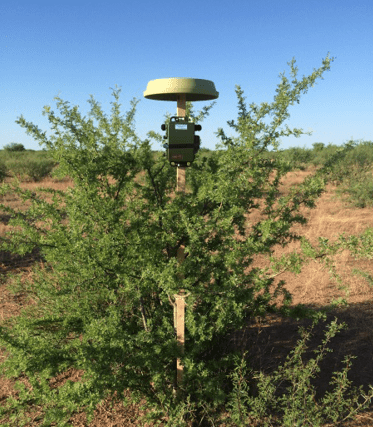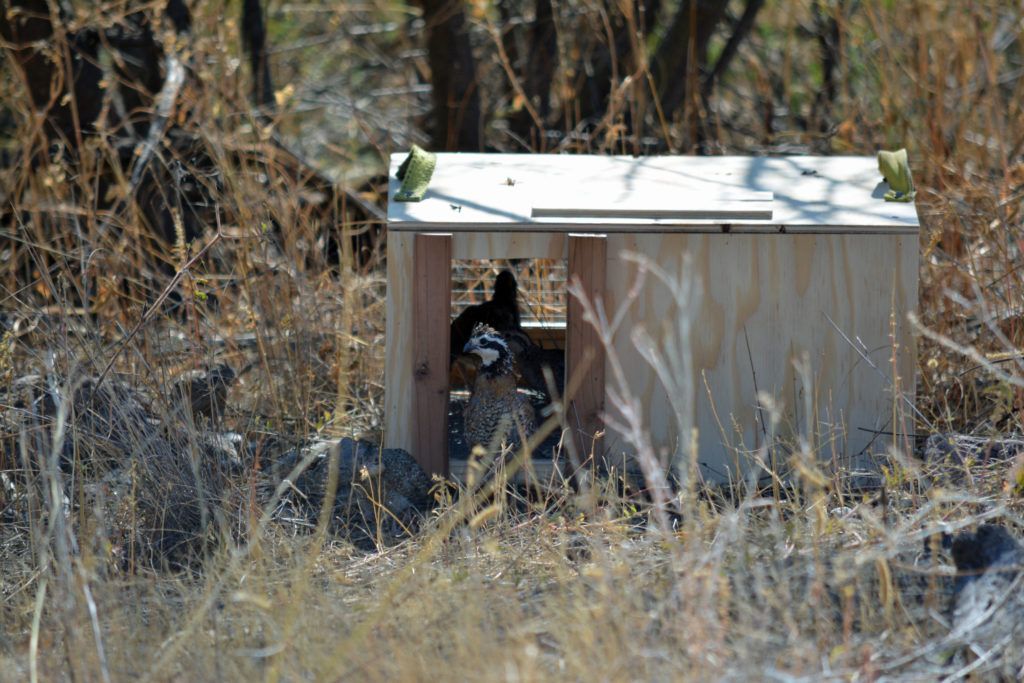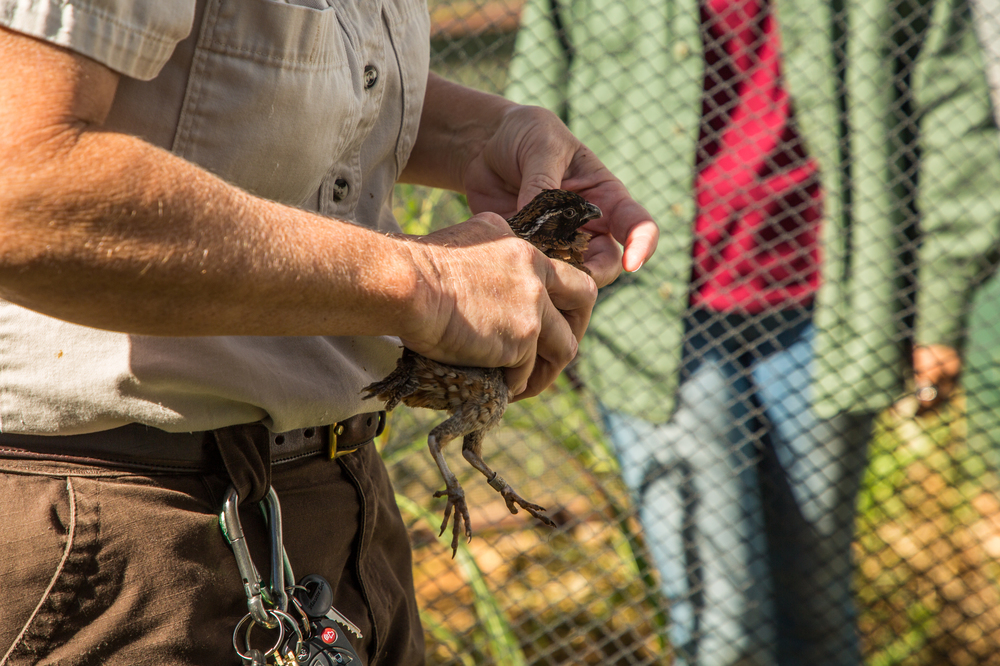By Lacrecia Johnson, Zone Biologist, National Wildlife Refuge System, Southwest Region, USFWS
The Masked Bobwhite Quail (Colinus virginianus ridgwayi) is a charismatic endangered subspecies of America’s favorite game bird, the Northern Bobwhite Quail. Loss of habitat due to intensive livestock grazing in combination with drought and exotic species contributed to its decline. Their historical range extends from southern Arizona into Sonora, Mexico. The United States maintains captive populations at Buenos Aires National Wildlife Refuge (BANWR) and the George Miksch Sutton Avian Research Center in Bartlesville, Oklahoma. Within the last few years, the United States Fish and Wildlife Service (USFWS) worked with Mexican partners to establish a third captive population at Africam Safari, in Puebla, Mexico. While no wild populations exist in the United States, populations may remain in Mexico, with the last confirmed sighting in 2007.

Today, the USFWS is reinvigorating recovery efforts through research and collaboration between U.S. and Mexican partners. To determine if and where wild populations exist in Mexico, researchers are applying novel techniques including use of Autonomous Recording Units (ARU’s). These are self-contained audio recording devices that conduct acoustic monitoring surveys without requiring the presence of human observers. This allows for more data collection over larger areas and timeframes. ARU’s were set on a private ranch in Sonora, Mexico to spatially survey in its entirety the last known location of wild Masked Bobwhite, and to record at dawn and dusk over the entire monsoon-driven breeding season. Vegetation studies were coupled with the placement of ARU’s to assess habitat suitability, and target areas for restoration or future Masked Bobwhite release sites in Mexico. The results of this work are currently being analyzed.
For quail to survive they need suitable cover, food, and water. The captive breeding and reintroduction programs at BANWR use modern technology along with good old-fashioned hard work to set these birds up for success. We use geographic information systems, remote sensing, and on-the-ground surveys to assess past habitat restoration efforts, target potential restoration and release sites, and map quail habitat. Through this work, we have identified patches of habitat suitable for reintroductions of Masked Bobwhite on BANWR. We are working to expand and connect these patches through habitat enhancement, restoration and rehabilitation. Techniques used include seeding, half-cutting, mesquite removal and rock dam construction.

The release of captive Masked Bobwhite’s to establish wild populations has had mixed results over time. In the late 1970s and early 1980s, USFWS biologists lead the development and implementation of conditioning techniques with encouraging success. Scientists helped birds to respond correctly to their environment by developing and employing post-release conditioning through use of a foster parent. In this technique, wild male Northern Bobwhite Quails from Texas were vasectomized and paired with about 15 Masked Bobwhite chicks each. Following a short bonding period in captivity, the parent and chicks were released into the wild. This approach lead to the establishment of several Masked Bobwhite populations, but lack of appropriate habitat management ultimately lead to their extirpation.

After many years of abandonment, we are now able to employ this technique again coupled with active habitat management in order to establish populations in the wild. During 2018, we have released over 400 Masked Bobwhite into BANWR, and are quantifying post-release survival of quail through science-based monitoring. Our goal is to recover the Masked Bobwhite and in doing so, provide increased hunting and viewing opportunities to the public. Continued efforts will require having Masked Bobwhite to reintroduce, ensuring conditioning to survive in the wild, targeting appropriate habitat for releases and restoration, and ensuring the work is defensible and fiscally responsible.
This work would not be possible without our partners in the United States and Mexico including state and federal agencies, non-profit conservation groups, and private landowners. Some of these partners also serve on our Masked Bobwhite Recovery Team, which includes members of the Sonoran Joint Venture’s Management Board. In addition to aiding in the development of plans, they have unique scientific and administrative skills that support collaborative conservation and management of the species. Since 2009, the team has provided expertise to assist the USFWS in making recovery decisions, conducting on-the-ground implementation of recovery actions, and assisting with funding and other resources to support the work. We would like to thank our partners for their collaboration and support. For additional information on the history of this project and on-going efforts, please view our Story Map.

